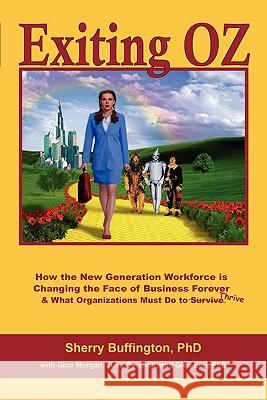Exiting Oz » książka
Exiting Oz
ISBN-13: 9780970892638 / Angielski / Miękka / 2011 / 218 str.
Exiting OZ is an eye-opening book about leadership as it must become for organizations to survive in today's rapidly changing world. It is a must read for leaders interested in building a sustainable organization and populating it with dedicated, high performance people, and for high performance people interested in avoiding the perils and pitfalls of OZ organizations. OZ is a metaphor for Organizational Zeal, the notion that the organization is more important than the people that keep it alive. OZ organizations are full of ineffective leaders and each is exposed in this book through clever comparisons to the characters from L. Frank Baum's book The Wonderful Wizard of Oz. Exiting OZ takes you on a fascinating journey through the world of typical organizations and explains in colorful analogies why business-as-usual is a formula for failure as the newer generations move into the workforce majority and reject standard management practices. Giving organizations a ten to twelve year window to get it right, the authors explain, and back their assertions with plenty of data, why organizations of every kind, from corporations to governments, to academic, religious and other institutions must adopt new leadership strategies if they are to survive and thrive.
Exiting OZ is an eye-opening book about leadership as it must become for organizations to survive in todays rapidly changing world. It is a must read for leaders interested in building a sustainable organization and populating it with dedicated, high performance people, and for high performance people interested in avoiding the perils and pitfalls of OZ organizations.OZ is a metaphor for Organizational Zeal, the notion that the organization is more important than the people that keep it alive. OZ organizations are full of ineffective leaders and each is exposed in this book through clever comparisons to the characters from L. Frank Baums book The Wonderful Wizard of Oz. Exiting OZ takes you on a fascinating journey through the world of typical organizations and explains in colorful analogies why business-as-usual is a formula for failure as the newer generations move into the workforce majority and reject standard management practices. Giving organizations a ten to twelve year window to get it right, the authors explain, and back their assertions with plenty of data, why organizations of every kind, from corporations to governments, to academic, religious and other institutions must adopt new leadership strategies if they are to survive and thrive.











